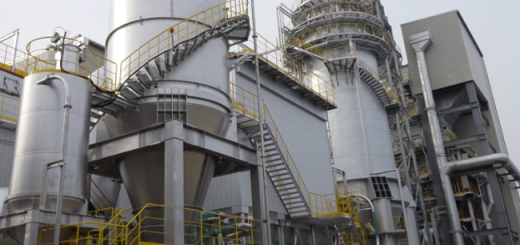CNIC Statement: Overseas Export of Radioactive Waste is Unacceptable – Uranium Waste from Japanese Nuclear Research and Development has been exported to a facility adjacent to indigenous sacred sites in Utah, USA –
June 24, 2024
Japan Atomic Energy Agency (JAEA) has been proceeding with its plan to export about 136 tons of uranium ore and ion-exchange resin with absorbed uranium, which had been stored at the Tono Geoscience Centre (Gifu Prefecture) and Ningyo-toge Environmental Engineering Centre (Okayama Prefecture), to the White Mesa Mill (Energy Fuels Inc., Utah), the only uranium smelting facility operating in U.S.
The Grand Canyon Trust (a local U.S. environmental NPO) reported that aerial pictures of the White Mesa Mill taken on 16th May confirmed objects what appeared to be JAEA containers. According to the bill of lading, the cargo ship that carried the shipment arrived at Everett Harbor in Washington on January 16, 2024.[i] So far, JAEA has made no announcement regarding this transportation.
These exported substances, including uranium ore, were produced in the process of research and development related to Japanese uranium mine exploitation. Although the material is described as resources, there was no plan to refine them in Japan and even after refining, more than 99.5% of the material will be stored as slag at the White Mesa Mill. About 70% of the radioactivity naturally contained in ore remains in the slag.[ii] This, in fact, is an overseas export of radioactive waste. This export by JAEA has cost 189 million Japanese yen (about USD118 million). In addition, JAEA is a National Research and Development Institute, and its funding source is national tax.
White Mesa Mill is situated next to the sacred Native American Bears Ears National Monument, and also adjacent to the Ute Mountain Ute Indigenous People’s White Mesa Community. Residents in the area have reported various kind of issues caused by the mill and have strongly opposed its operation.
Prior to this, JAEA sent 290m³ (about 500 tons) of uranium contaminated soil stored in Ningyo-toge to the White Mesa Mill in 2005. In the same way as the export this time, the uranium contaminated soil was transported as resources. However, the average uranium content of the exported soil was 0.03%U, the uranium content amounting to only 150kg. In the end, not being able to find a repository for the contaminated soil, JAEA paid a total of 660 million yen to consign the disposal of the soil to the White Mesa Mill.
In response to an open letter of inquiry regarding the overseas smelting of Japan’s uranium substances sent by CNIC to JAEA in 2022, JAEA replied, “In conducting overseas smelting, we will comply not only with the relevant laws and ordinances of Japan, but will also take into consideration the relevant environmental and social considerations as well as legal compliance in the local area when selecting contract partners.” However, little trace of consideration for indigenous people in the United States can be seen in the export conducted this time.
It is absolutely unacceptable to force Japan’s radioactive waste onto indigenous peoples who are already suffering from this issue. We strongly protest this outrageous act by JAEA.
Related Information From CNIC
US company may take uranium-contaminated soil from Japan Nuke Info Tokyo No. 107 July 9, 2005
Exportation of Radioactive Substances by the Japan Atomic Energy Agency (JAEA) February 11, 2021
US Trip Diary—America’s Uranium Development and Japan’s Uranium Garbage (Part 1) June 6, 2022
Report on US Trip—America’s Uranium Development and Japan’s Uranium Garbage (Part 2) August 4, 2022
Open Letter of Inquiry and Responses regarding Overseas Smelting of Japan’s Uranium Ore November 3, 2022
[i] www.grandcanyontrust.org/blog/japanese-waste-shipped-uranium-mill-near-bears-ears
[ii] www.iaea.org/sites/default/files/publications/magazines/bulletin/bull23-2/23204683335.pdf

